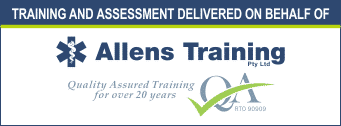Imagine you’re in the middle of a thrilling soccer game. You’re about to score the winning goal when suddenly, you feel something wet dripping from your nose. (They even happen to Ronaldo) You touch your nose and see blood on your fingers. Yikes! But don’t worry – nosebleeds are common and easy to handle with just a few steps. First aid training can be incredibly helpful in such situations. Let’s find out why they happen and how you can stop them quickly.
Table of Contents
What are Blood Vessels and Why Do They Bleed?
Blood vessels are like tiny straws carrying blood throughout your body. Inside your nose, these vessels are very close to the surface and can break easily, leading to a nosebleed. When a blood vessel breaks, blood flows out, and your body works to form a clot to stop the bleeding.

How Nosebleeds Start
The inside of your nose is like a garden of tiny, delicate blood vessels. These vessels help keep the air you breathe warm and moist, but they are also quite fragile. Imagine the vessels as a bunch of tiny hoses. If something happens to the inside of your nose – like picking it, getting hit, or even just dry air – those tiny vessels can break and start bleeding.
When the blood vessels in your nose break, blood starts flowing out. This might seem alarming, but it’s your body’s way of handling the situation. Your body will try to form a clot – kind of like a natural bandage – to stop the bleeding. This process usually happens pretty quickly, but you can help it along with a few simple steps.
Why Nosebleeds Are More Common in Some People
Some people, especially kids, get nosebleeds more often. This is usually because their blood vessels are even closer to the surface and more delicate. Dry air can make the inside of your nose dry and more likely to bleed. This is why you might notice more nosebleeds in the winter or in dry climates.

Different Types of Nosebleeds
There are two main types of nosebleeds: anterior and posterior. Anterior nosebleeds are the most common and happen when the blood vessels in the front of the nose break. These are usually easy to treat. Posterior nosebleeds, which are less common, happen deeper in the nose and can be more serious. They often need medical attention.
First Aid for a Nosebleed
Step-by-Step Guide to Stop a Nosebleed

- Stay Calm and Reassure: Don’t panic! Staying calm helps you think clearly. If it’s a child with the nosebleed, reassure them.
- Sit Up Straight and Lean Forward: Sit down and lean slightly forward. This helps the blood drain out of your nose instead of going down your throat, which can make you feel sick.
- Pinch the Nostrils: Use your thumb and index finger to pinch the soft part of the nose shut. Hold it for at least 10 minutes. No peeking! Keep holding the whole time. This allows time for the blood to clot.
- Breathe Through the Mouth: Breathe through your mouth while your nose is pinched. This keeps you comfortable and relaxed.
- Ice Pack: Place an ice pack on the back of your neck. This can help slow the bleeding by making the blood vessels constrict.
- Check and Repeat if Necessary: After 10 minutes, let go and check if the bleeding has stopped. If not, pinch your nose for another 10 minutes. If it still doesn’t stop, it’s time to get medical help.
What Not to Do During a Nosebleed
- Don’t tilt your head back: This can cause blood to run down your throat and make you cough or choke.
- Don’t stuff tissues or other objects in your nose: This can make things worse.
- Don’t blow your nose right away: This can start the bleeding again. Wait at least 15 minutes before blowing your nose gently.

Aftercare: What to Do After a Nosebleed
- Don’t Pick or Rub Your Nose: I know it’s obvious but when your nose is healing, and picking or rubbing it can disturb the clot and cause bleeding to start again. Keep your pesky fingers away from your nose!

- Keep the Inside of Your Nose Moist: Use a spray or gel to keep the inside of your nose moist. This helps to prevent the inside of your nose from getting too dry and crusty.
- Stay Hydrated: Drink plenty of water. Staying hydrated keeps the mucus membranes in your nose moist, reducing the chance of a nosebleed.
When to See a Doctor
- If the bleeding doesn’t stop after 20 minutes.
- If you get nosebleeds often.
- If the bleeding is very heavy.
- If you feel dizzy or weak.
FAQs: Quick Answers to Common Questions
- What is the first aid for nose bleeding?
- First aid for nose bleeding involves staying calm, sitting up straight, leaning slightly forward, pinching the nose shut for 10 minutes. If the bleeding doesn’t stop after 20 minutes, seek medical help.
- What is the quickest way to stop a nose bleed?
- The quickest way to stop a nose bleed is to sit up straight, lean forward, and pinch the soft part of the nose shut for at least 10 minutes without peeking. Use a cold compress on the forehead and neck to help slow the bleeding.
- What should you not do during a nosebleed?
- During a nosebleed, don’t tilt your head back, stuff tissues or other objects in your nose, or blow your nose right away. These actions can make the bleeding worse.
- What makes nosebleeds go away?
- Nosebleeds usually go away by pinching the nose shut for 10 minutes, sitting up straight, leaning forward, and using an icepack on the back of the neck or forehead. Keeping the inside of the nose moist can help prevent future nosebleeds.
- What to do after a nosebleed?
- After a nosebleed, avoid heavy lifting, don’t pick or rub your nose, and keep it moist with saline spray. If the bleeding doesn’t stop or is frequent, see a doctor.
Next Steps: Where to Get Help
- Your Doctor: For frequent or severe nosebleeds.
- Emergency Department: If the bleeding doesn’t stop after 20 minutes or is very heavy.
Summary
Nosebleeds are common and usually not a sign of something serious. By understanding the causes, symptoms, and first aid steps, you can handle them confidently and effectively. Remember, first aid training can be incredibly useful in managing such situations. Just stay calm, follow the steps, and seek help if needed. Happy nosebleed-free days ahead!
If you have any more questions or need further information, don’t hesitate to ask. Let’s keep learning and stay safe!
Let’s Learn

At My First Aid Course Brisbane, we’re the premier First Aid training provider in Brisbane. Our courses are nationally recognised and instructed by top tier trainers. We provide courses both to individuals as well as on-site and corporate training.
Why Choose Us?
- Express Sessions Daily Across Brisbane: Our super-popular First Aid 2-hour EXPRESS practical with online pre-learning is a favorite. Experience it once, and you’ll never go back!
- Free Parking: All our North & South Brisbane locations offer free parking.
- Onsite Groups: We bring our First Aid and CPR courses to your location, perfect for workplaces, schools, gyms, and clubs.
- Most 5-Star Reviews in Qld: With a 4.92-star rating based on 2800 online reviews, Brisbane loves our courses, and you will too!


